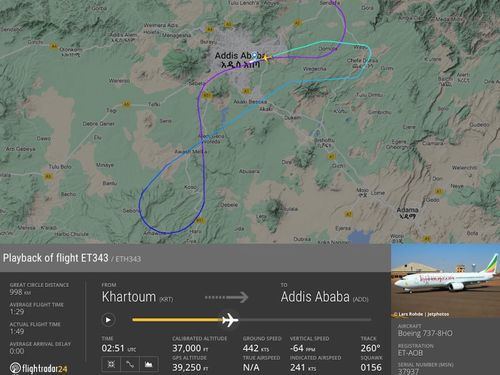Airline expert Alex Macheras said the incident was “deeply concerning” and shone a light on the issue of pilot fatigue, which most passengers are completely unaware.

Data obtained by the aviation news site indicated the jet was cruising at 11,200 metres on autopilot when it failed to descend at Addis Ababa Bole International Airport, its scheduled destination, on August 15.
Air traffic control were apparently unable to reach the crew despite making several attempts at contact.
However, an alarm was triggered when the plane overshot the runway and continued along the route.
The aircraft subsequently began to descend, landing safely around 25 minutes later.
Automatic Dependent Surveillance-Broadcast data showed the aircraft overflying the runway, before beginning its descent and manoeuvring for another approach.
Ethiopian Airlines said on Friday it was aware flight ET343 “temporarily lost communication” with Addis Ababa air traffic control.
The incident comes after unionised pilots at major airlines, including Qantas, raised the potentially deadly issue of fatigue and increased demands on crew.
The changes, under consideration, would allow planes to land under stronger tailwind conditions, increasing the number of planes able to land during busy times.
Landing with a tailwind makes the plane come in faster, Lucas said, reducing the amount of time a pilot has to react to any problems.
Are you an Australian pilot worried about fatigue? Email msaunokonoko@nine.com.au
“Our major concern is it decreases our safety margins,” Lucas told Bloomberg.
“If something else happens, I’m running rapidly out of options.”
Lucas also flagged concern over proper rest for pilots on the long-range Airbus SE A321XLR jets, which are set to enter service at the end of 2024.
In the US, Southwest Airlines and Delta Air Lines pilot unions have also warned airline executives that pilot exhaustion is on the rise.
Commercial airlines need to treat fatigue and the resulting mistakes as a safety risk, the pilots said in a letter sent to executives in April.
As the industry bounces back from the COVID-19 pandemic, some blame rising demand for air travel for pilot exhaustion increasing.










